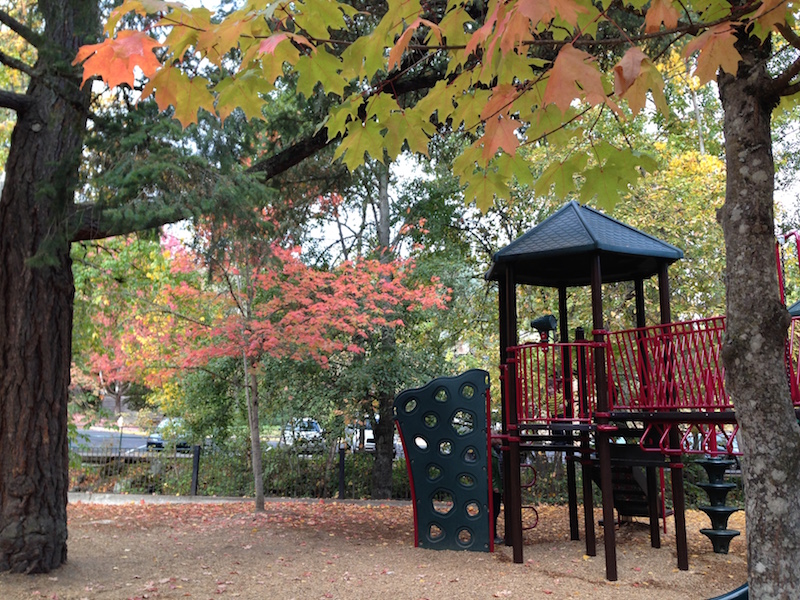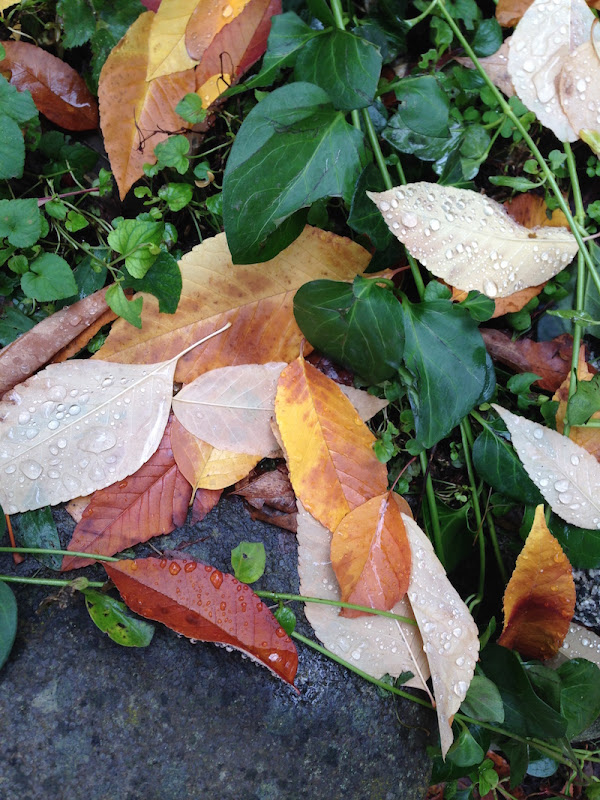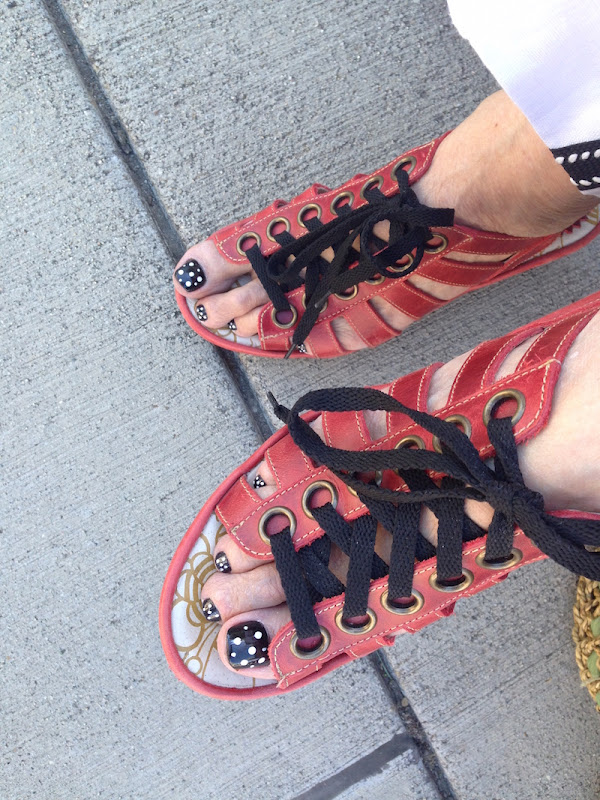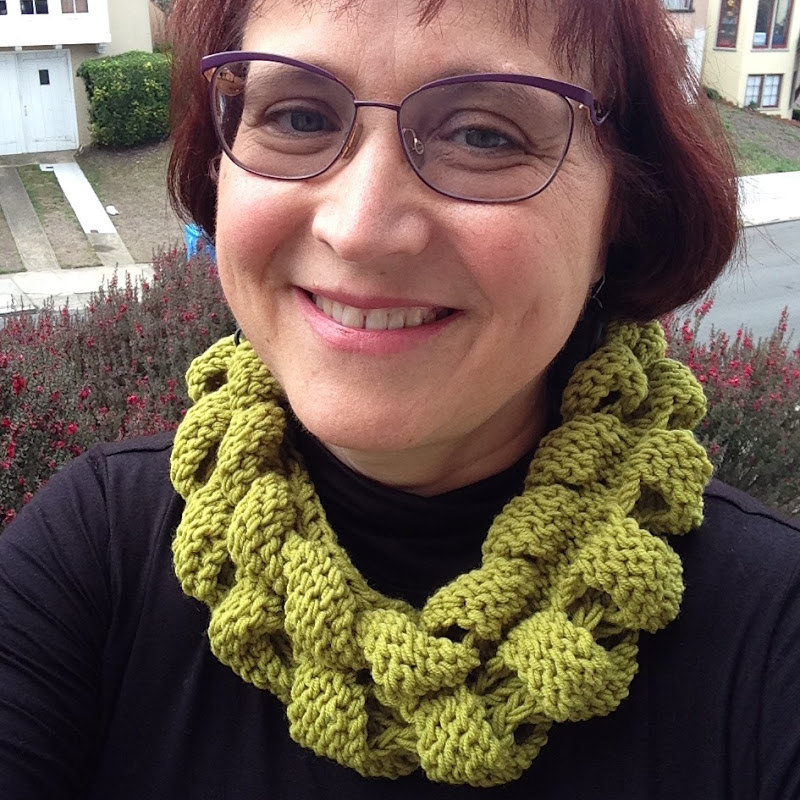
I spent last week in Ashland, Oregon, attending Design Outside the Lines and it was great!
At the retreat I made this coat, the "Jean Cacicedo Coat". First, I'll talk about the coat, and then give a brief recap of Ashland DOL, Oct 2015.
TOC
Diane Ericson is (very soon) releasing a new pattern in her Revisions line, called the Jean Cacicedo Coat. She made an early copy of the pattern available to interested DOL participants. (It's not yet on her site, so stay tuned.) You may recall that I purchased three remnants of double-sided wool when I visited the Mill End Store in Portland last spring.

Note that the cellist is wearing a black tux and playing a white cello. For my coat, I preferred the other side, where the cellist is wearing a white tux and playing a black cello. That makes my cellist left handed, but I'm left handed, so that is fine by me!
I wanted to use these in a coat, but I was not sure how to go about it. I brought them to DOL, sure that I would use them somehow. I was not sure which companion fabrics to include, so I filled the back of my van with many possibilities—lots of black and grey fabrics, and a few reds. Only one fabric worked—a charcoal grey textured wool with a pretty selvedge. It was a relief to use a fabric that I brought—I was about to give up and buy something from the fabric store across the street, when Carol Lee helped me look through them again.
I had also brought a tote bag full of coat patterns, just in case, but the second I saw the Jean Cacicedo pattern, that was it. Love at first sight.
If you are not familiar with Jean Cacicedo, she is a well known fiber artist. I took a "puzzle coat" class from her, back in the '80s when Marcy Tilton owned the Sewing Workshop in San Francisco. The Cacicedo coat features:
- Set-in sleeve with a square armhole. Because the bottom of the armhole is low on the body, the sleeve creates a dolman effect, but it's a fairly raised dolman. (If you have a large bicep, you should probably check the fit of the sleeve.)
- The sleeve tapers pleasingly at the wrist.
- No center back or side seams—the body of the coat is one large pattern piece and forms a cylindrical shape. (Yay! It's not a swing coat!)
- Shawl collar
- Patch pockets
- Appliqués
- The coat is unlined, but it would not be hard to draft a lining.
- Two lengths are provided
- I did not do an FBA
- I did not narrow the shoulder and I usually do! (The shoulder was in the perfect spot.)
The coat runs from XS to 3XL. I traced off an XL in the longer length. I omitted the patch pockets and appliqués, so only three pattern pieces were required: body, sleeve, and collar facing. Because I was collaging my coat, I needed a base fabric. When Diane made her version, she used Thinsulate batting as a base, but my coatings were heavy and I didn't want anything as beefy as Thinsulate. I didn't bring a suitable base fabric, so I ran across the street to the fabric store and bought 8 yards of sew-in Pellon interfacing. Pellon is not particularly wide—about 24"—I seamed it together to make a single piece of fabric large enough for the coat body.

I made a few alterations:
- 1/2" forward shoulder adjustment.
- Generous dart at the bottom of the armhole where a side seam would be, if there were a side seam. Because of this, I took the sleeve in by an equivalent amount. (I removed about 4" total.)
- Omitted the patch pockets. On the left side of the coat, two fabrics were joined in about the right location for a side seam, if there had been a side seam. I used this opportunity to insert a single-layer side pocket. I did not put a pocket on the right side of the coat.
- The collar facing has a 1-1 correspondence with the coat collar—there is no allowance for turn of the cloth. Be sure to allow for this if you are using a beefy fabric.
- I did not read the instructions, so I am not sure what kind of closure the pattern calls for. I closed the coat with a large snap.

I cut the body of the coat from the seamed Pellon and began laying down the fabrics, starting with the cello (or is it a bass?) at the center back. The fabric had a nice selvedge, so I placed it 3" from the bottom of the Pellon, where the finished hemline would be. I filled in the gaps with the charcoal wool, using the selvedges wherever possible. Once the coat body was pieced, I ripped out the Pellon and discarded it.


After the body of the coat was complete, I evaluated the remaining pieces of the coating. One remnant was woven with the words "Big Steve &". Who is "Big Steve", exactly? I googled but was unable to figure it out. Based on this coating, "Big Steve &" is a musical group that includes a cello (or is it a base?). I wanted to use the text "Big Steve" on the sleeve. Once the sleeves were completed, I had only tiny pieces left of the coating. I considered putting them on the facing, but decided it would be too busy, so the facings use only the textured grey wool.

As I mentioned, I closed the coat with a single large snap. I found a large pendant in the bead store in Ashland, and decided to use it on the coat. I attached a button-shank to the back of the pendant and sewed it to the coat as a non-functioning, decorative button.

Finally, to create a better line, I inserted 1/2" shoulder pads.
And that's it! The coat pattern is a quick sew but, because collaging took time, and I included lots of handwork inside the coat, this was my only project of the retreat.


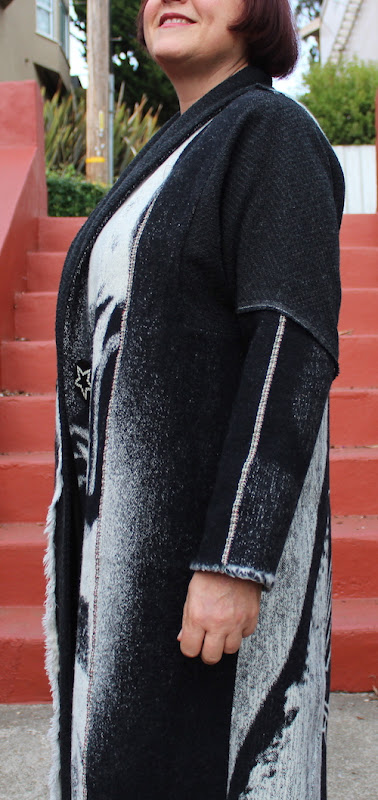

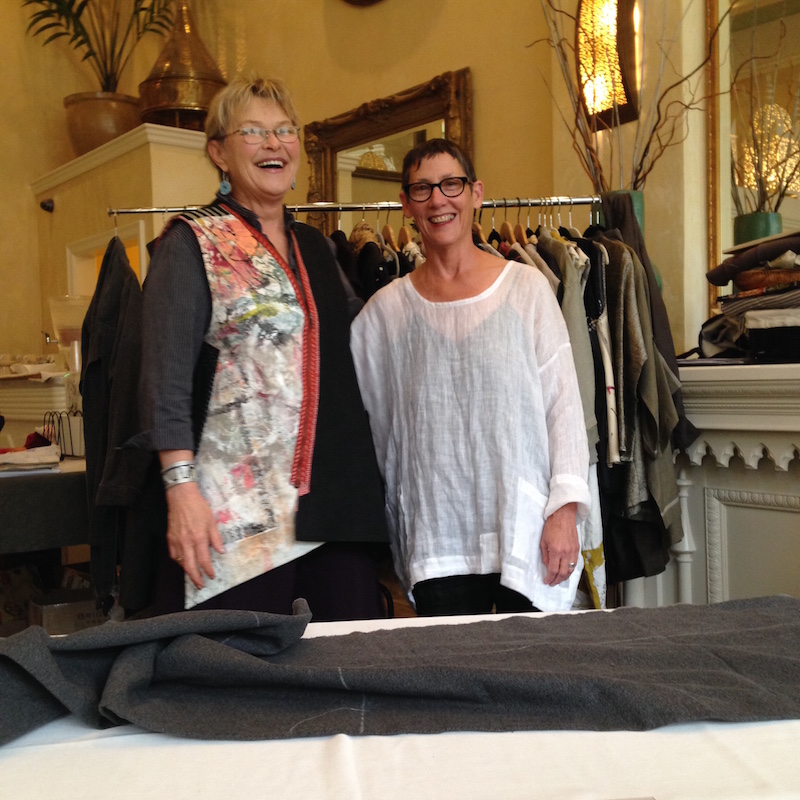
You may recall that, almost exactly three years ago, I attended Taos DOL 2012. It was the last Taos DOL where Marcy Tilton and Diane Ericson taught together, and I was so glad to experience the team who originated DOL.

The retreat took place in the historic Ashland Springs Hotel.
After Marcy retired from DOL, it was hard to imagine who Diane would bring in as a replacement, but she had a brilliant idea: For each DOL, she invites a different fiber artist to join her as guest teacher. Her list of past and future guest teachers includes Nancy Shriber, Holly Badgley, Jilli Blackwood, and Karen Nicol. The guest teacher for this DOL (and also for last fall) was Carol Lee Shanks. Carol lives in the Bay Area and, while I had heard of her, we had never met. The theme for the retreat was "My Coat: Creating a Personal Shelter." Since coats are one of my favorite things to sew, and I'd heard great things about Carol as guest teacher, I signed up.
I'm so glad I did!
The general format of a full day at DOL is this: we ("we" being the 20 participants and "angel helper", Gwen Spencer) convene in our temporary studio in the hotel at 9am. Part of the room is set up for lecturing with a rack of clothing and a dress form that the teachers use for show and tell. Diane speaks for about an hour on a topic designed to inspire creativity. The guest teacher talks for about an hour on her process. We settle in to our sewing area and get working. Several times throughout the day, we reconvene for a quick talk or demo. Topics included a stenciling demo, and Diane's approach to refashioning. One day Diane's son, Miles Frode, came by to demo how he creates his painted and stenciled textiles. Diane had a number of his pieces for sale.
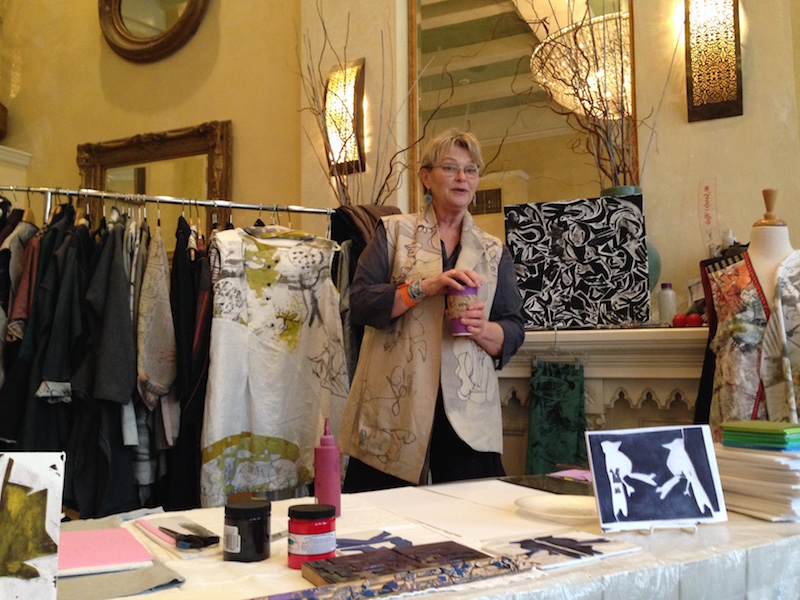









Carol's approach to design uses simple shapes—rectangles, triangles, circles—combined with her deep understanding of proportion. She walked us through how she works and showed us pieces made from the same fabric, using the same technique, but resulting in very different garments. This approach to design intrigued many at the retreat who used her technique to create beautiful (and very different) garments.
Diane's studio is several blocks from the hotel, and most of us walked over to visit at lunchtime. Diane shares her studio with Nuno felt artist, JoAnn Manzone. Some of her work is for sale in a corner of the studio, as well as Diane's patterns, books, cards, and supplies.



I purchased two pieces of fabric from Diane:


A few final pictures from my time in Ashland.














